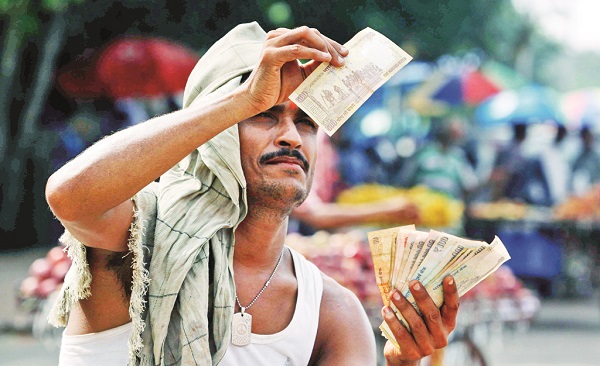In a forthcoming paper for the Cato Institute, I have summed up the 25 years of economic reform as an era of private sector success, government failure, and eroding institutions.
In 1991, many analysts warned that opening up the economy would mean industrial domination by multinational corporations, with Indian companies going bust or becoming mere suppliers to the MNCs. In fact Indian companies blossomed as never before, and hundreds of them became multinationals themselves. These included world-class players in software, small cars, auto components and pharmaceuticals. India failed in labour-intensive industries but blossomed in brain-intensive industries and services, and that’s where the future lies. There has been plenty of crony capitalism, yet new companies without political godfathers have flourished as never before.
Sun Pharmaceuticals, unknown in 1991, has become India’s largest pharma company and a global power. Its owner Dilip Shanghvi has risen from nothing to become India’s richest person. The software industry has spawned thousands of millionaires, and the same is happening with start-ups like Flipkart and Ola. As Manmohan Singh once said, these are not the children of the rich; they are the children of economic liberalization. The private sector has driven India’s rise to a miracle economy, while old public sector giants have wilted or fallen. The main problem is lack of smooth exit for failures. The creative destruction of capitalism requires easy exit no less than easy entry.
Economic success has not been matched by social success. True, 138 million people were raised above the poverty line between 2004 and 2012, a world record. But aspirations have risen and people want more, especially non-manual jobs that are simply not visible.
India’s educational and health indicators have improved so slowly that they have been overtaken in some respects by Bangladesh and even Nepal. Amartya Sen and Jean Dreze have shown that of all miracle economies, India has recorded the slowest social improvement.
The quality of all government services is dismal. Government schools suffer from mass teacher absenteeism. Poor people are shifting their children to expensive private schools. The PISA survey of 2009 placed India at the bottom of 74 countries, even though India was represented by its two best states.
India is near the global bottom in health spending as a proportion of GDP. Its health indicators are substandard, with anaemia up to 80% in some areas, some of the highest child malnutrition rates in the world, and open defecation that causes diarrhoea and prevents children from absorbing the calories they eat.
Government services are terrible because they are delivered by unsackable employees with no accountability to the people they serve. Besides, the expertise in the bureaucracy is woeful for what is now a middle-income country. Every ministry and state government must have reserved seats for outside experts with guaranteed tenure.
Key services like policing, justice, electricity, roads, water supply and sanitation are pathetic. The police are hopelessly undermanned by global standards, refuse to register complaints unless bribed, and cannot catch resourceful criminals. A former Police Commission member said the police’s first priority was to harass political opponents, and their second priority to protect criminals within the ruling party. Justice is moribund with court decisions taking decades. One judge estimated it would take 320 years to clear the backlog of 31 million cases.
In this milieu, law-breakers consistently have an advantage over law abiders, and this corrodes quality across the board — politicians, bureaucrats, businessmen and professionals. Of MPs elected in 2014, 186 have criminal cases pending, up from 158 in 2009.
The mega-scams of the last UPA government highlighted how politics has become big business, converting political power into cash. This provoked enough outrage to decimate the Congress in the 2014 elections. Modi has reduced big corruption. New rules mandate auctions of public resources instead of ministerial allotments. Yet corruption continues unabated among state governments and petty officials.
Instead of building strong, independent institutions, India is increasingly witnessing political appointees instead of experts, the exit of independent thinkers, and the corrupt “sale” of junior government posts in the states (and even college seats and teaching posts). Narendra Modi has worsened an already dismal situation in New Delhi, but chief ministers are far greater culprits.
Economists Acemoglu and Robinson have shown that for a country to rise from middle to high-income status, a vibrant private sector is not enough. Strong independent institutions are a must, to ensure that the best rise and the worst fall. That’s the way India needs to go.



Sir, I am a great fan of yours, Excellent narration of the facts..!
This has reference to your comments on slow improvement of indicators like health, education etc. In states like Kerala, where these indicators have even achieved global standards, the wages are so high that private sector investment cannot come in. Even cultivation of cash crops is no longer viable . Kerala achieved these standards only with flow of money from outside the state. Even in the western world, where the social indicators are high, the wages are high and the taxes are high, which will again be counterproductive in an economy like India. Even in states like TN, wherein the government is giving out doles in various ways, the incentive to work is slowly reducing, which will again be an impediment to growth.
The government needs to pull up their socks,no doubt in improving governance, but doles should stop, and wages should be reasonable, so that investments can come in .We should not get out priced in a competitive world.
I did not understand this line, “Narendra Modi has worsened an already dismal situation in New Delhi, but chief ministers are far greater culprits.” I thought that he reduced big corruption.